Intended Use: Enduro
Internal Width: 30 mm
Configurations Available:
- 29’’, Boost (15×110 mm front, 12×148 mm rear), and 6-bolt rotors only; choice of XD or Microspline drivers
- Mixed wheel (29’’ front / 27.5’’ rear) configuration coming but not yet available
Rim Material: Carbon fiber
Stated Weight: 1,869 g (pair)
Blister’s Measured Weight (w/ tape and valves)
- Front: 865 g
- Rear: 996 g
- Total: 1,861 g
MSRP: $1,420 USD
Intended Use: Enduro
Lengths Offered: 165, 170, and 175 mm
Material: Aluminum
Stated Weight: 620 g (175 mm arms, 34 tooth chainring, w/o bottom bracket)
Blister’s Measured Weight:
- Cranks only: 571 g
- Bottom Bracket (BSA threaded): 105 g
- 30 tooth direct mount chainring: 69 g
- Total:
- Crank and chainring: 640 g
- Crank, chainring, and bottom bracket: 745 g
MSRP:
- Cranks (no chainring or bottom bracket): $330 USD
- Chainring: $114 USD
- Bottom bracket (BSA threaded): $61 USD
Material: Carbon fiber or aluminum options
Shape: 8° backsweep, 5° upsweep
Width: 800 mm
Configurations:
- Carbon: 31.8 or 35 mm diameter, 20 or 30 mm rise
- Aluminum: 31.8 or 35 mm diameter, 25 or 40 mm rise
Stated Weight:
- Carbon: 240 g
- Aluminum: 322 g
Blister’s Measured Weight: 321 g (uncut aluminum bar, 31.8 diameter, 40 mm rise)
MSRP:
31.8 mm diameter:
- Carbon: $149 USD
- Aluminum: $85 USD
35 mm diameter:
- Carbon: $159 USD
- Aluminum: $89 USD
Gradient Stem
Material: Aluminum
Bar Diameters Offered: 31.8 or 35 mm
Lengths Offered: 33, 40, or 50 mm options
Stated Weight:
- 31.8 mm: 180 g (50 mm length)
- 35 mm: 135 g (33 mm length)
Blister’s Measured Weight: 169 g (31.8 mm bore, 40 mm length)
MSRP: $99 USD
Gradient Direct Mount Stem
Material: Aluminum
Bar Diameters Offered: 31.8 or 35 mm
Lengths Offered:
- 31.8 mm: 45 mm
- 35 mm: 45–50 mm (adjustable)
Stated Weight: 154 g (35 mm bore)
MSRP: $99 USD
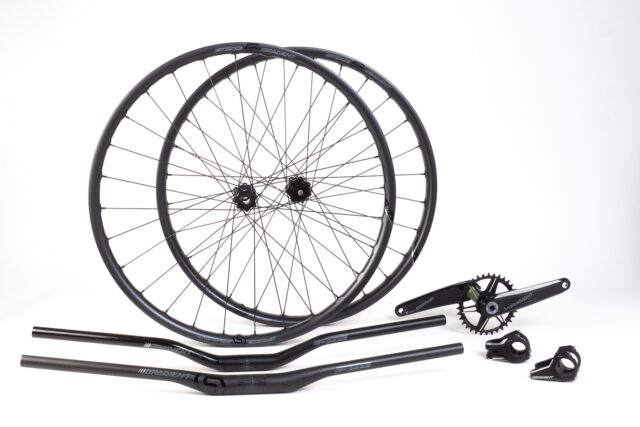
Intro
FSA has been in the game for a long time, making its presence most known in the worlds of Road and Cross Country racing for their featherweight carbon fiber parts ridden by a broad set of sponsored teams. The brand’s focus on the more aggressive end of the mountain bike spectrum has ebbed and flowed over the years, but after sponsoring the Atherton Racing program, it’s perhaps unsurprising to see a new lineup of higher-end gravity-oriented parts hitting the market with the update of the Gradient series.
The new Gradient lineup includes carbon wheels, nicely machined cranks, handlebars, and stems. The wheels and cranks also have some interesting features that differentiate them from other options.
We’ve been spending time on the new bits for several months now, and it’s an impressive package — read on to see what the new parts are all about.
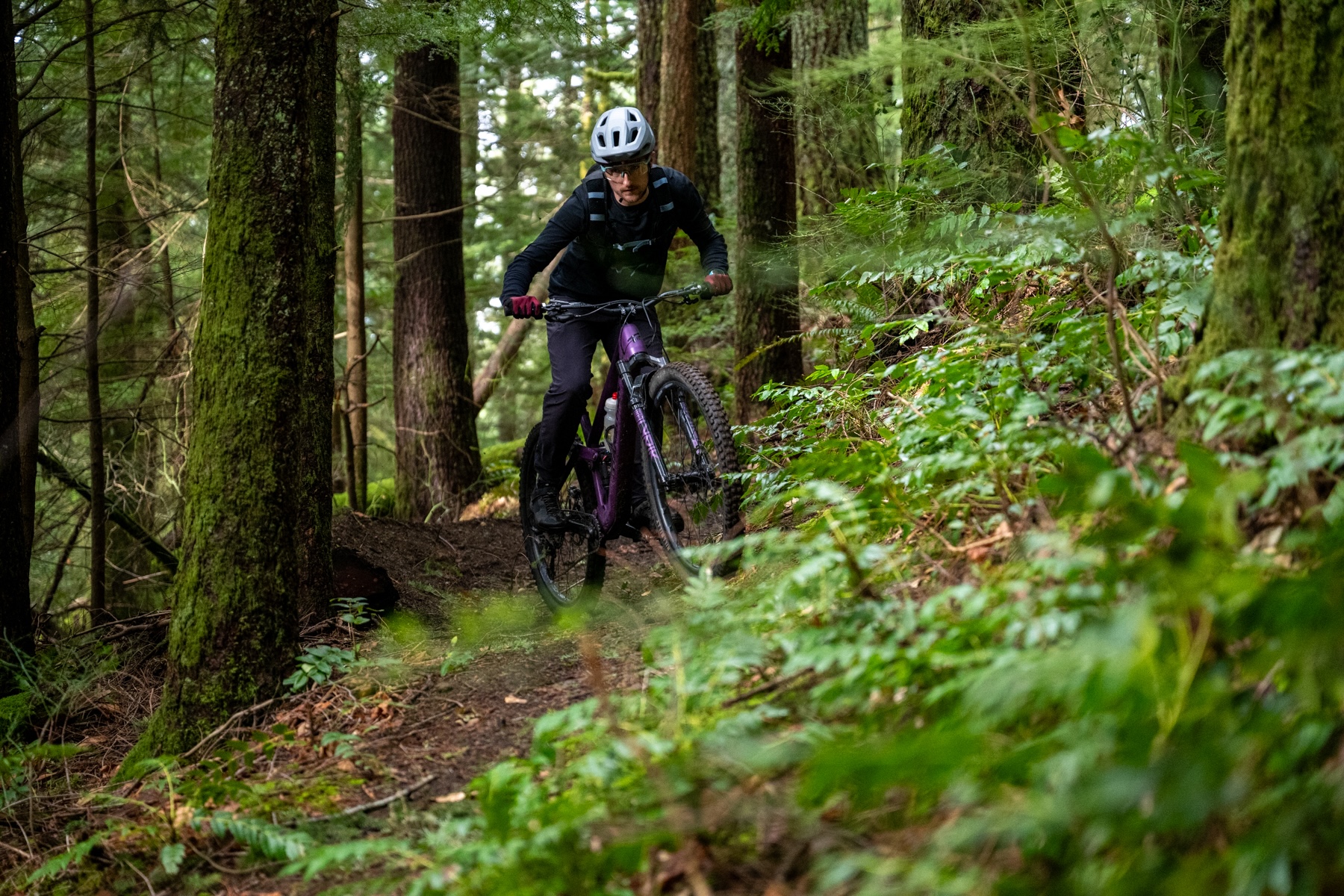
Gradient i30 Carbon Wheels
Features & Construction
The new Gradient i30 wheels are a fairly big step for FSA’s wheel program, pushing further into the gravity-fueled side of the sport. Starting with the basics, the new Gradient i30 wheels feature hookless carbon rims with reinforcement around the spoke holes, creating a sort of wavy aesthetic. They are 30 mm wide internally, have a 4 mm offset spoke drilling to help balance spoke tension, and have a fairly shallow 22–24 mm depth (depth is staggered due to the spoke hole reinforcements), which FSA says helps to allow additional vertical flex in the rim. FSA has also given the Gradient i30 rims a wide 3.5 mm rim wall to help reduce the risk of pinch flats.
28 straight-pull spokes connect the rims to FSA’s own hubs, which are Boost only (15×110 mm front, 12×148 mm rear). The hubs are available with Microspline or XD driver bodies — there’s no HG driver, which may limit some folks clinging to their 11 or 10-speed drivetrains.
The Gradient i30 hubs feature the new Power Ratchet System X-900 (PRS, for short). The PRS X-900 system takes inspiration from Chris King’s expired Ring Drive patent and consists of two steel ratchet rings backed by a spring, which deliver 72 points of engagement. The larger drive ring is keyed into the hub shell and easily removed for maintenance.
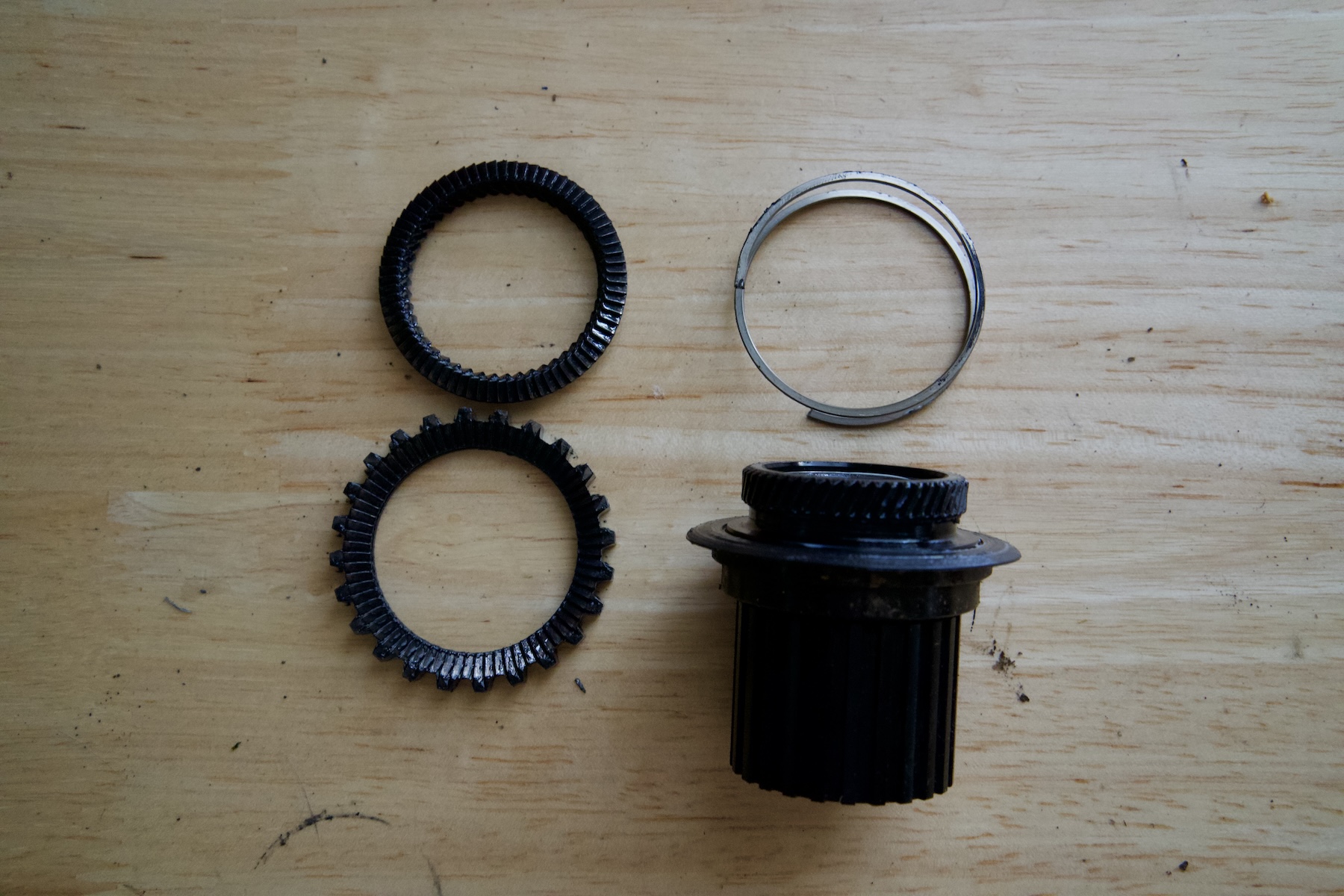
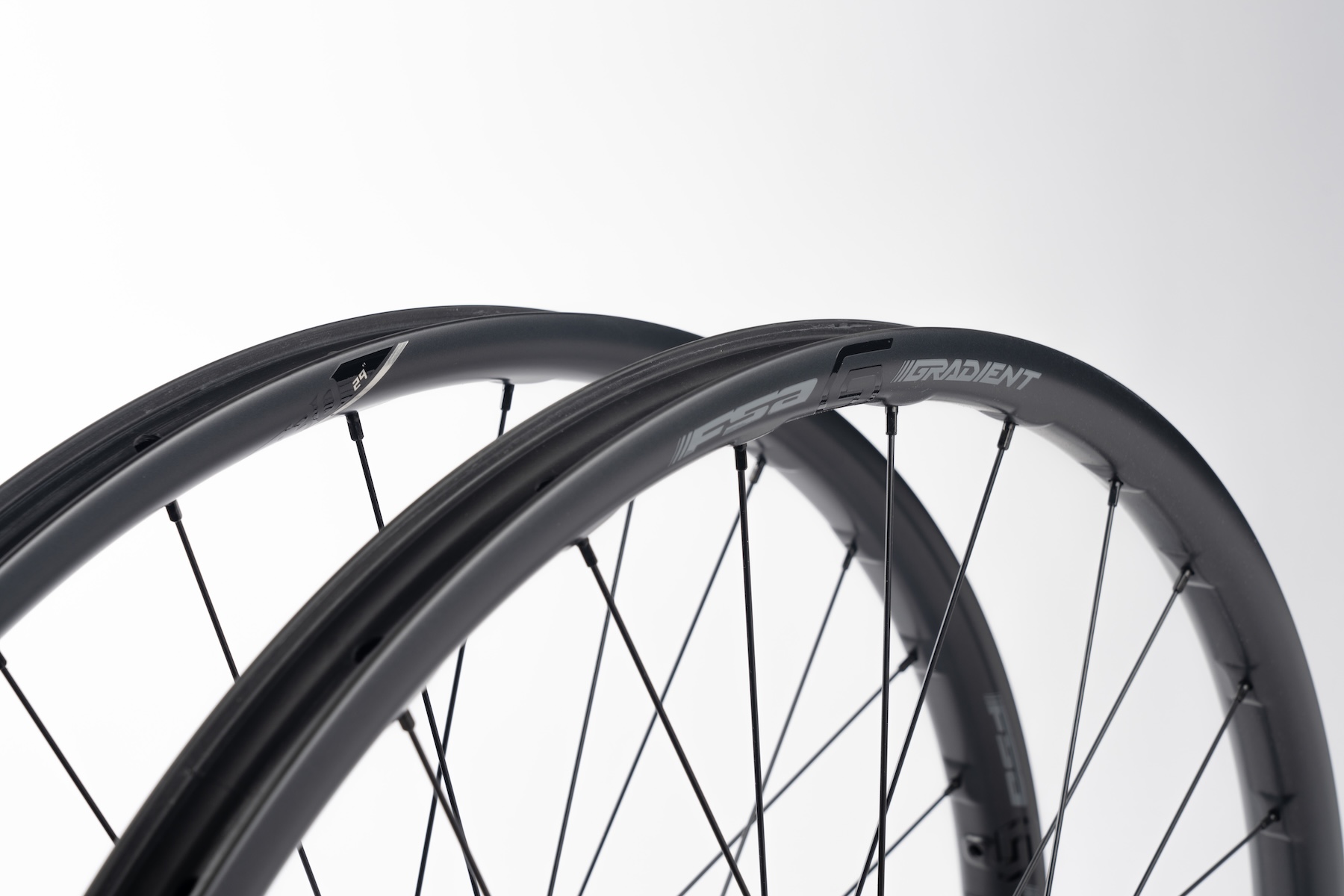
When freewheeling, the two rings are held together by the fairly light tension of the spring, but once power is applied at the pedals, a helical spline on the driver body (which interlocks with the smaller ratchet ring) presses the two rings firmly together. This design theoretically reduces drag while coasting by allowing a lighter spring to be used, while taking advantage of the rider’s pedal force to drive the rings together and create a strong interface between the ratchets under power.
The Gradient i30 wheels are ASTM 5 certified, which is the highest ASTM testing category reserved for Downhill applications. They come with a lifetime warranty (we don’t have details on the more specific terms), but also manage to come in at a rather low 1,861 gram weight (29’’, Microspline driver) for the pair. It’s worth noting that FSA has achieved that weight while still using brass nipples, which should be more resilient than alloy ones and also make for easier maintenance down the road, given that they’re less likely to seize. Galvanic corrosion between aluminum nipples and carbon fiber rims can also be an issue; brass nipples solve that problem.
Setup
Zack Henderson (6’, 165 lb / 183 cm, 74.8 kg): There was nothing to write home about in getting the Gradient i30 wheels set up — David had already taped the rims by the time I got them, but the FSA rim tape seems to be of decent quality, and tires snapped up with a floor pump.
I did take a minute to pull apart the ratchet to see how it works, and found it to be a little bit dirty (David had already ridden these wheels before me). I took a few seconds to wipe everything off and re-grease the ratchet, which had the benefit of also quieting the ratchet down a bit. The stock grease fill and ratchet design make for a fairly loud coasting volume, but loading it up with a bit more grease helped to bring the volume way, way down at lower speeds. Since that re-greasing, the rear hub has managed to stay rather quiet through the test period, which makes me happy — I strongly prefer a more stealthy hub to a loud one.
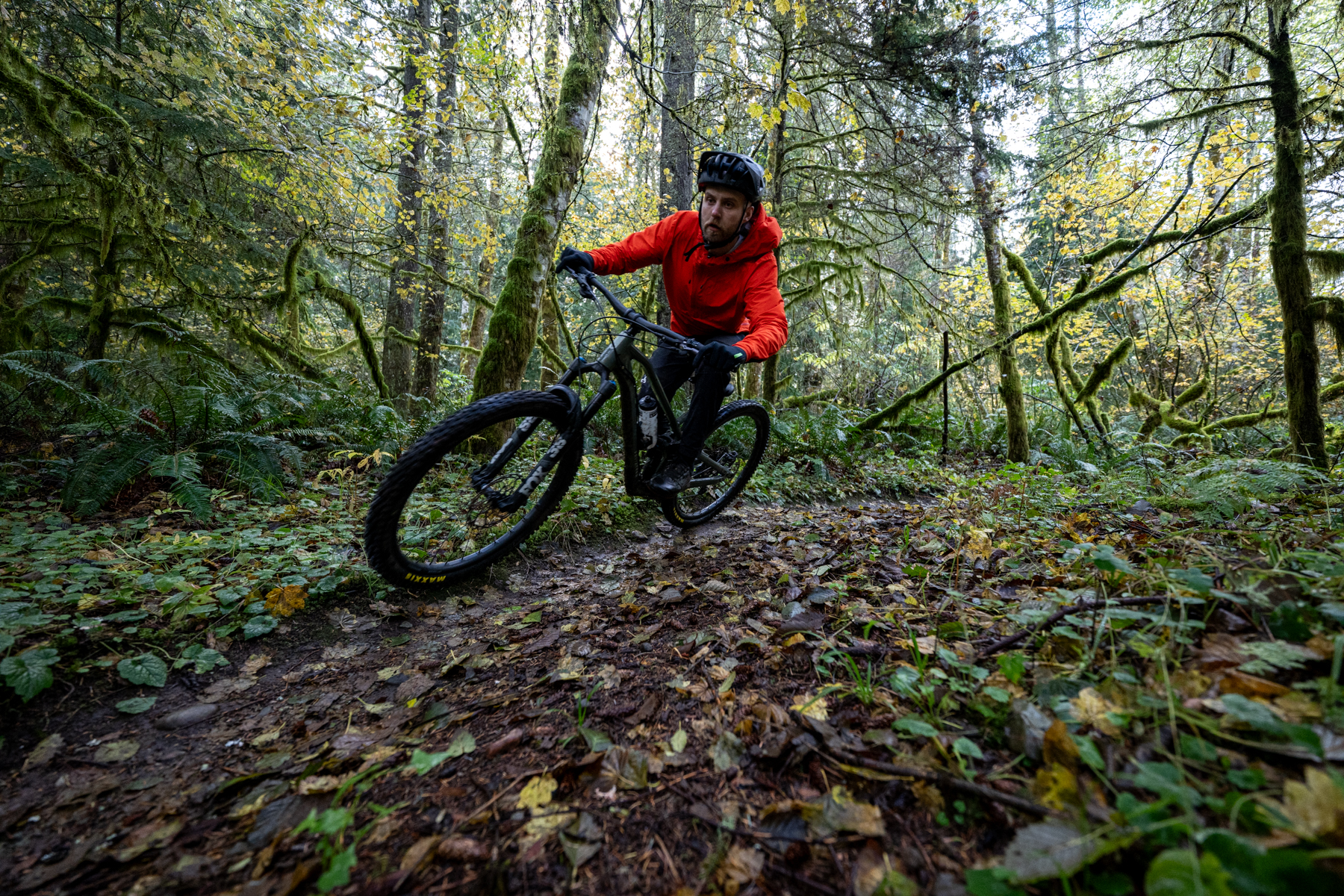
David Golay (6’, 160 lb / 183 cm, 72.6 kg): The Gradient wheels came untaped, with a roll of FSA-branded tape in the box. Having to do the taping yourself is a little annoying, though on the plus side, the roll of included tape has quite a bit left over after taping up our review wheels, should it ever need re-doing. The included tape is relatively easy to apply and has held up to a number of tire changes over our time with the wheels.
On the Trail
Zack: The Gradient i30 wheels are a bit lighter than some of the other wheelsets in my arsenal, but given I’m typically rocking tires that weigh more than a wheel itself, I’d be lying if I said I really noticed the weight savings. The wheels feel fairly laterally stiff — a bit more so than the Forge+Bond 30 EM rims that I’ve been riding recently, but roughly in line with the NOBL TR37 rims that I have on another wheelset. That lends a more precise handling feel overall, and while they don’t feel quite as compliant as the Forge+Bond rims do on really rough trails, they’re still rather comfortable overall and feel properly modern in that respect.
FSA says that the Gradient i30 rims are certified to Downhill standards, and while I haven’t broken a carbon rim recently, the Gradient wheels shrugged off some fairly hard hits on rocky trails. It’s a bit disappointing that the front hub isn’t cross-compatible with a 20 mm axle to truly test their Downhill chops, but I’ve had zero issues to report and still haven’t had to bust out a spoke wrench.
I was a bit less sure about how I’d get along with the hubs, mostly because I find Chris King’s Ring Drive mechanism to be too loud for my tastes — a design that is quite similar to that of the PRS X-900 ratchet mechanism in the Gradient i30 hubs. FSA’s PRS design does make quite a racket with the stock grease, but as I mentioned above, I was able to bring the volume down quite a bit by applying a healthy amount of Dumonde Tech Freehub Grease. The PRS X-900 ratchet design has an interesting quality of feeling notably low drag at lower speeds, while also happening to be almost imperceptibly silent. As speeds pick up, the hub increases in volume while getting a bit higher-pitched — while it’s not particularly quiet at higher speeds, it still isn’t as loud as the aforementioned Chris King hubs, or Industry Nine’s Hydra.
After a few months of riding in varied conditions, I’m happy to report that the Gradient i30s have required no maintenance. The spokes have held tension well despite some heavy rock-to-rim impacts. The freehub seal isn’t the burliest, so riders in super wet locales may want to check the freehub mechanism for contamination every now and again, but I didn’t end up seeing any excessive water or dirt ingress — the sealing is just not as ridiculously resilient as my Hope Pro 5 or Spank Hex hubs.
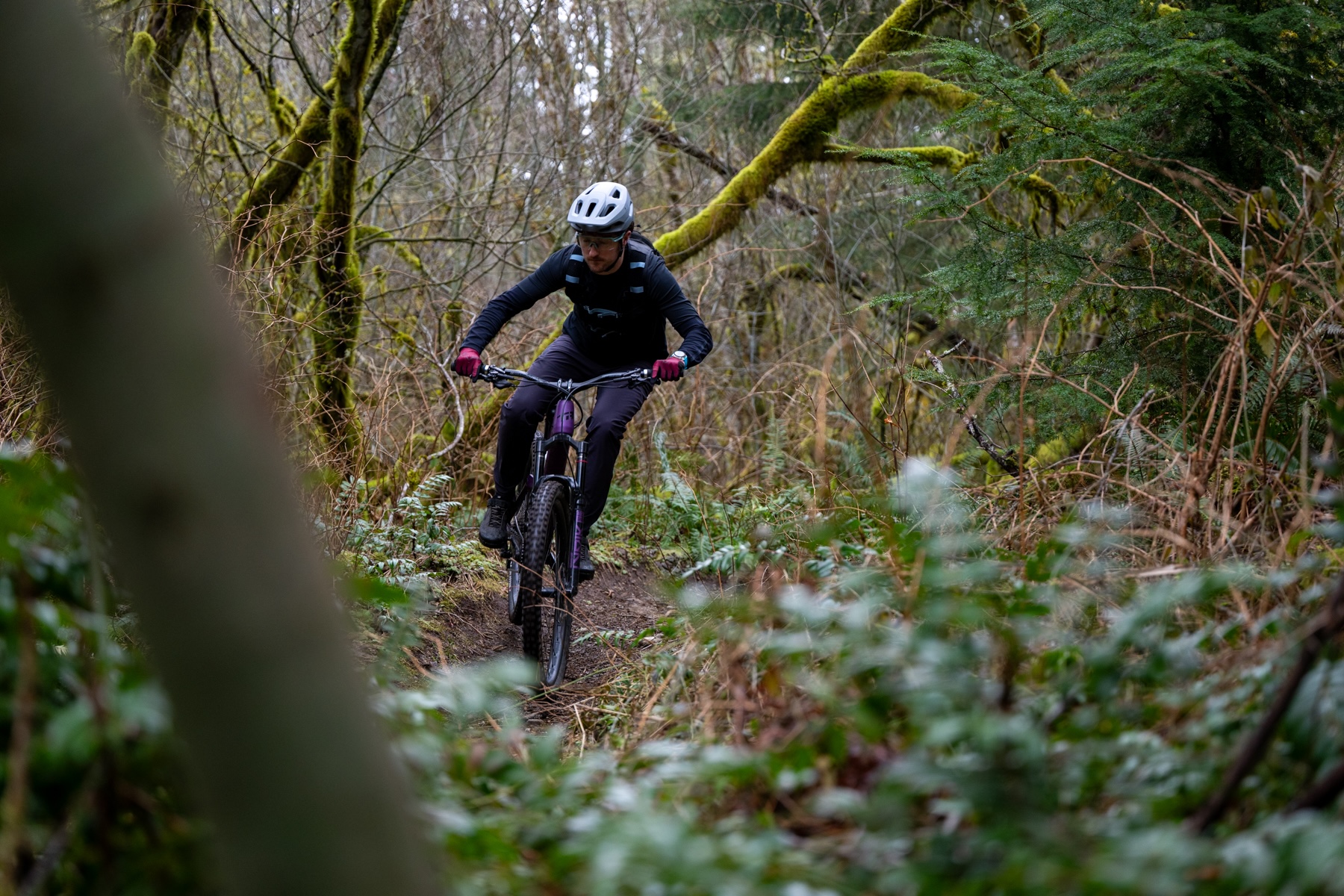
David: I spent about three months on the Gradient wheels before handing them off to Zack, and my take on their ride feel and performance is pretty similar to his. They’re relatively stiff and precise feeling laterally without being particularly punishing, and held up well without me needing to pick up a spoke wrench or do anything else. My testing period fell in the dusty late summer months, and I hadn’t cleaned out the internals before passing them along, so I’m not surprised that Zack found a bit of dirt in there, and the PRS mechanism feels relatively low drag while engaging solidly and consistently.
The only thing I have to add is that, while the Gradient i30 wheels feel pretty typical for a modern gravity-oriented carbon wheel in terms of compliance, they are on the more damped / muted end of the spectrum, rather than feeling more energetic and lively in how they rebound from being loaded up. That sensation felt particularly noticeable when swapping between the Gradient i30 wheels and the stock Hunt aluminum ones on the Privateer 161 that I used for much of the test period — even with identical tires and suspension setup, the bike felt noticeably more muted and calm with the Gradient wheels.
Some of that is definitely down to the Gradient wheels being stiffer, too — with the softer, less precise aluminum wheels, I found myself needing to make more little steering adjustments and line corrections, which helped make the bike feel more settled. But I also put a pair of Roval Traverse HD wheels on for a bit (which I’d categorize as being a bit stiffer than the Gradient i30 wheels vertically, and notably more lively-feeling), and the difference in feel between the Gradient and Traverse wheels was readily apparent.
Gradient Cranks
Features & Construction
Zack: FSA has a lot of experience in both carbon and aluminum cranks, and while the new Gradient cranks only come in the latter metal construction, they also use an interesting construction approach. Each crank arm consists of two machined pieces of 7075 aluminum bonded together. Bonding two halves together allows FSA to take a lot of material out of each crank arm, helping to bring weight down while maintaining strength.
The Gradient cranks come in 165, 170, or 175 mm lengths, and all come with a 177 mm Q-factor. They use a 30 mm spindle design that FSA calls BB392EVO, and it also features a spindle-mounted adjuster that helps dial in bearing preload. The modular design uses a spacer and lockring to allow either 52 mm or 55 mm chainline options with the direct mount chainring, which is available in 30, 32, 34, or 36 tooth options and works with SRAM or Shimano 11 and 12 speed setups.
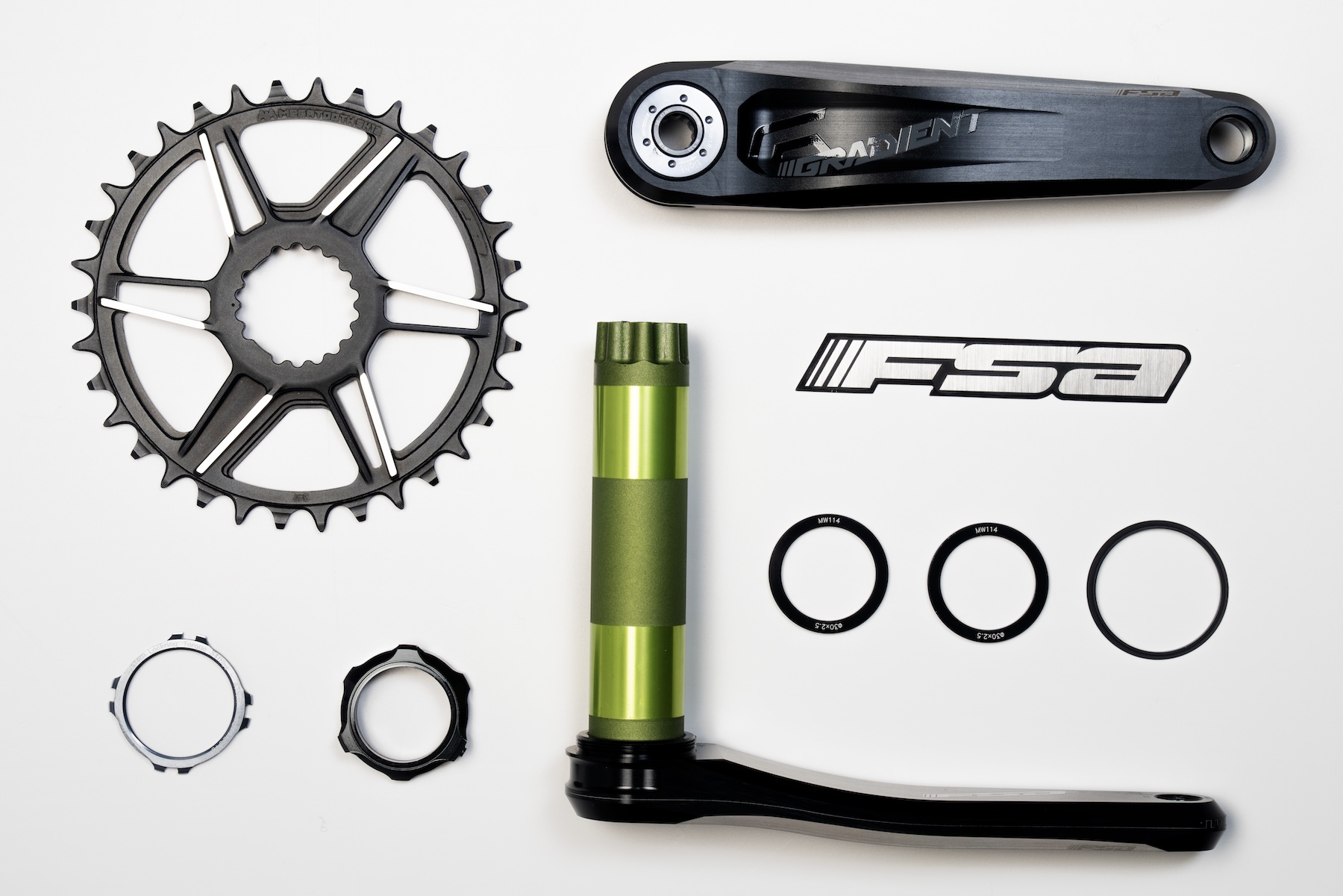
The only real miss here that could bug some buyers is the lack of options shorter than 165 mm. I’m perfectly happy with 165 mm cranks, but with several brands getting into 160 mm and shorter crankarms, the Gradient cranks aren’t a competitor there, at least for now.
Setup
Every crankset seems to have a slightly different setup procedure, and while various designs have gotten a bit closer to one another over time, I still needed to consult the manual when it came to the Gradient cranks.
Despite standards unifying in some areas of the bike industry, that is yet to happen when it comes to bottom brackets. FSA uses their own bespoke bottom bracket tool standard (which must be purchased separately), but otherwise, I was able to install the bottom bracket in my threaded 73 mm bottom bracket shell per usual.
Installation requires a small 2.5 mm aluminum spacer installed between the crank arms and bottom bracket on each side. The non-drive side crankarm comes already fixed to the spindle, and it’s the drive side arm that gets mounted up during install with a single central bolt that requires a good bit of torque (FSA specifies 38–41 Nm) — think SRAM and Race Face rather than Shimano. The new Gradient cranks use a fairly chunky threaded adjuster for dialing in preload once the cranks are installed, which is secured with a set screw to prevent loosening.
The direct mount chainring can be adjusted using a spacer to accommodate 52 mm or 55 mm chainlines, and I used the former given that I tested the bike on a bike with standard Boost spacing and a Shimano drivetrain — SRAM’s Transmission would require the 55 mm configuration, but it’s a very easy swap. FSA includes the required tool for the lock ring, but I still wish there was an option that didn’t require a bespoke tool.
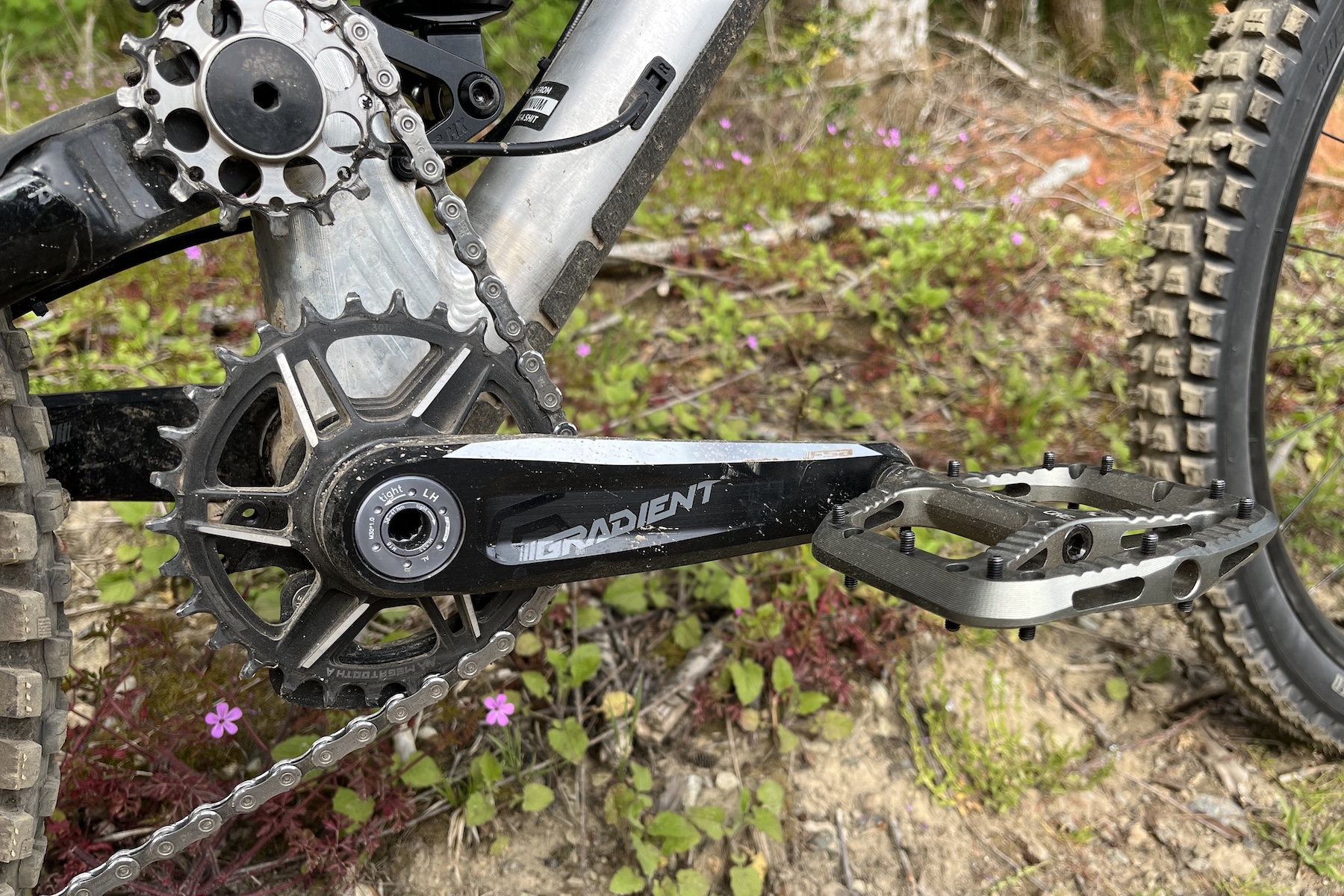
With the long spindle, spacers, and preload adjuster, there’s quite a bit of extension past the ends of the bottom bracket. The Q-factor (distance between the outside faces of each crankarm, and thereby an indication of crank stance width) rings in at 177 mm, which is 5 mm wider than my typical Shimano XT M8100 cranks (which have a 52 mm chainline), but 1 mm less than the 178 mm Q-factor on the 55 mm chainline-specific XT M8120 cranks. The Q-factor is a little bit wider than SRAM’s GX and XO Transmission cranks, which measure 174 mm. I did notice the slight Q-factor increase in that my stance felt just the slightest bit wider, but it quickly disappeared on the trail.
On the Trail
This part of the review is, fortunately, pretty straightforward — the Gradient cranks have gone about their business without a single complaint throughout testing. As mentioned above, the Q-factor was mildly noticeable at first, but quickly faded into the background. I found that I most noticed it with clipless pedals, whereas flat pedals and their inevitably slightly varied foot placement helped mask the dimensional differences a bit more.
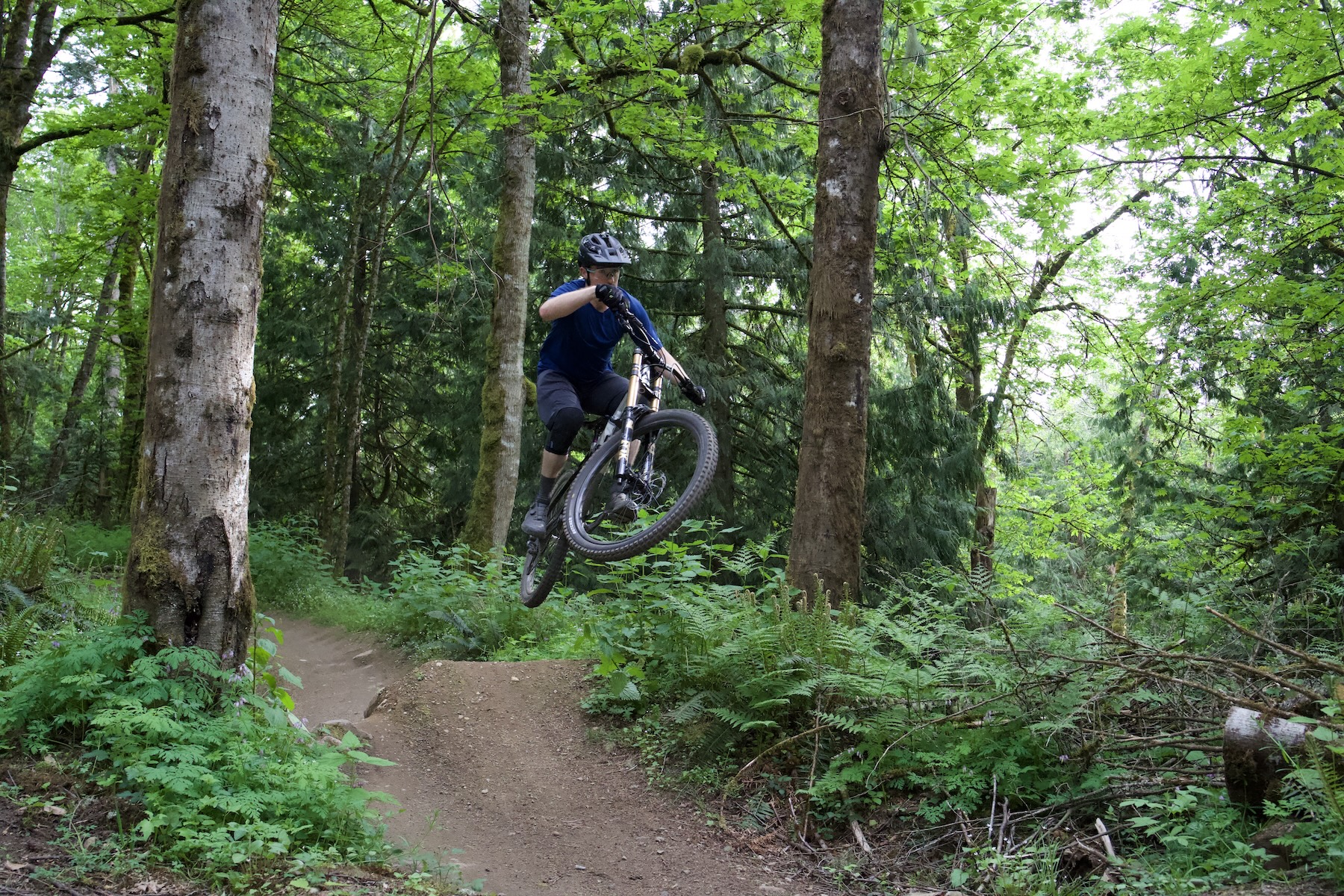
The finish on the Gradient cranks seems quite resilient, and I didn’t notice any anodizing wear where I might have otherwise seen some scuffs in the finish of other cranks where my shoes rub the crank arms on occasion. The bottom bracket still turns smoothly after some very wet riding through the winter and spring, and I never had to touch the preload adjuster after initial setup.
Most cranks are adequately stiff these days, and I’d be lying if I said I noticed any particular stiffness traits attributed to the Gradient cranks — they feel reassuringly solid, have shrugged off rock impacts, and (in my opinion) are nice to look at with their angular machined look. They do cost a good bit more than some more mainstream offerings once you factor in the crankarms, chainring, and bottom bracket, but the Gradient cranks have proven to be solid performers.
FSA Gradient Cockpit
Features & Construction
The Gradient cockpit options consist of two stem designs and two handlebars, all with multiple sizing options. The standard stem is an angular-looking unit made from machined 6061 aluminum, and it’s offered for 31.8 mm or 35 mm bar diameters. Both bore diameters are available in 33 mm, 40 mm, or 50 mm lengths.
The Gradient handlebars are available in carbon or aluminum options, and configurations vary depending on the material. While it’s fairly familiar language with most new handlebars these days, FSA says that compliance was a big design goal in both the carbon and aluminum models. Both materials are available in 31.8 or 35 mm diameters, measure 800 mm uncut, and have an 8° backsweep matched to a 5° upsweep. The carbon bars are available with 20 or 30 mm rise, while the aluminum ones come with 25 or 40 mm. The carbon bars are quite a bit lighter than the aluminum ones at 240 grams versus the aluminum models’ 322-gram claimed weight.
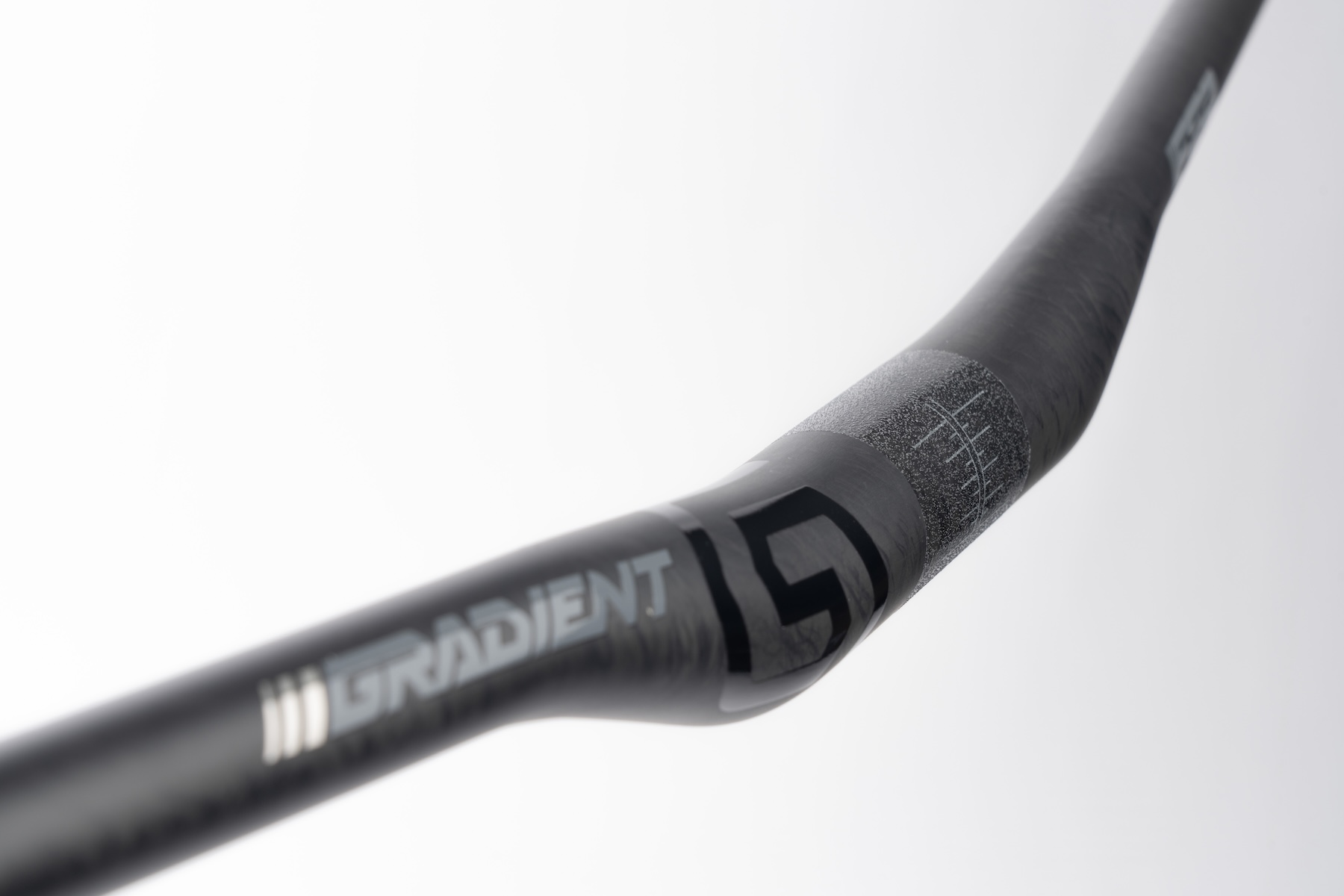
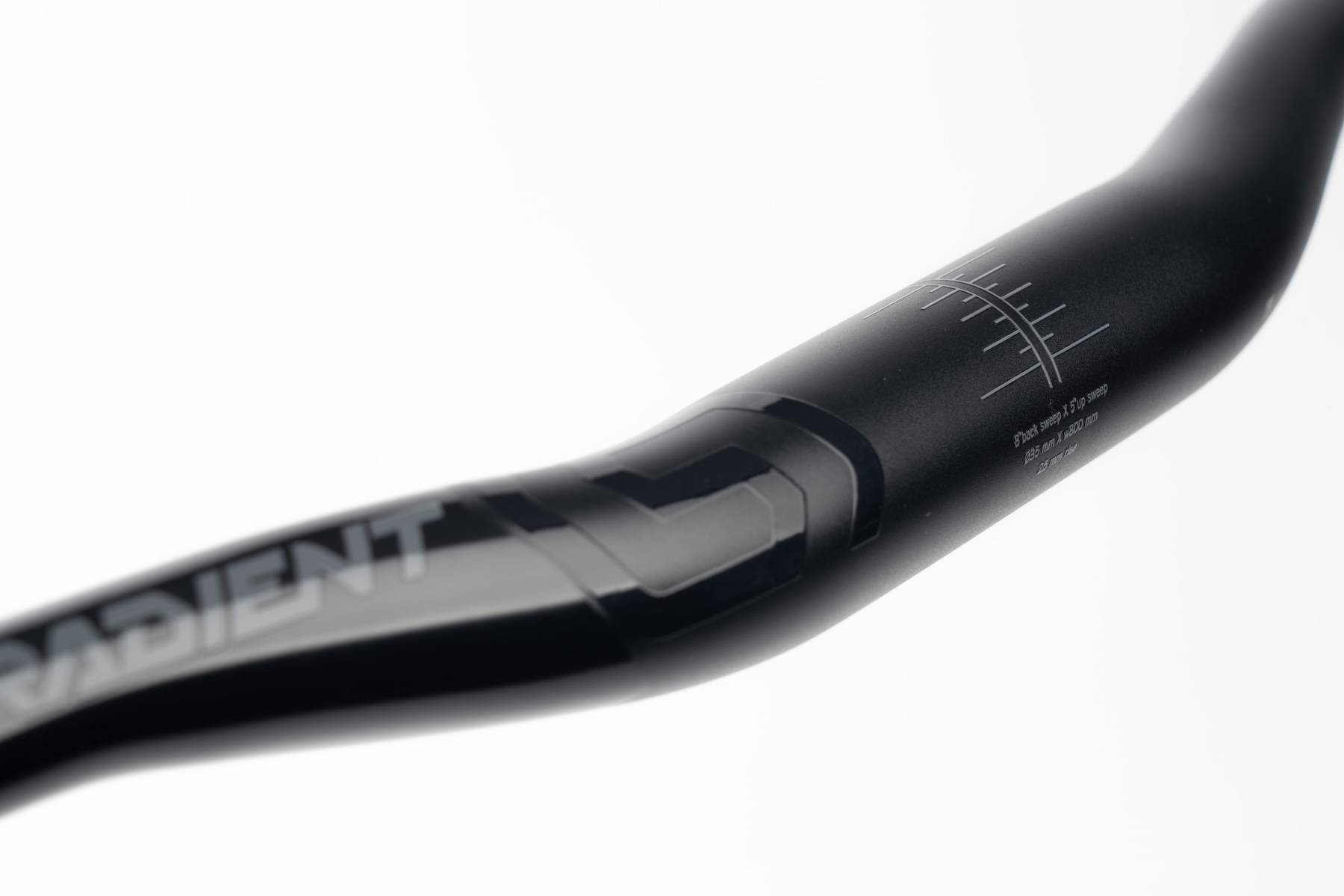
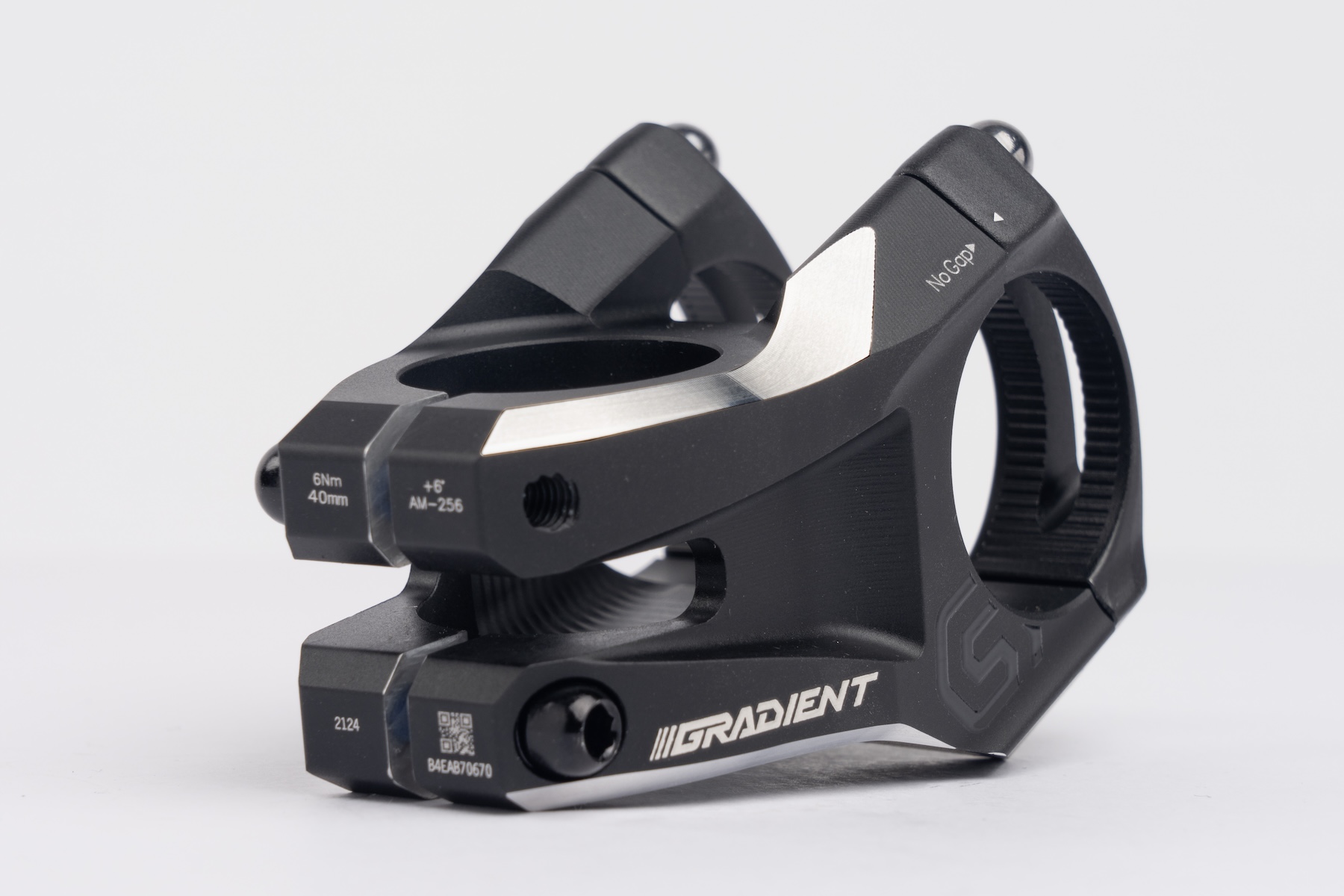
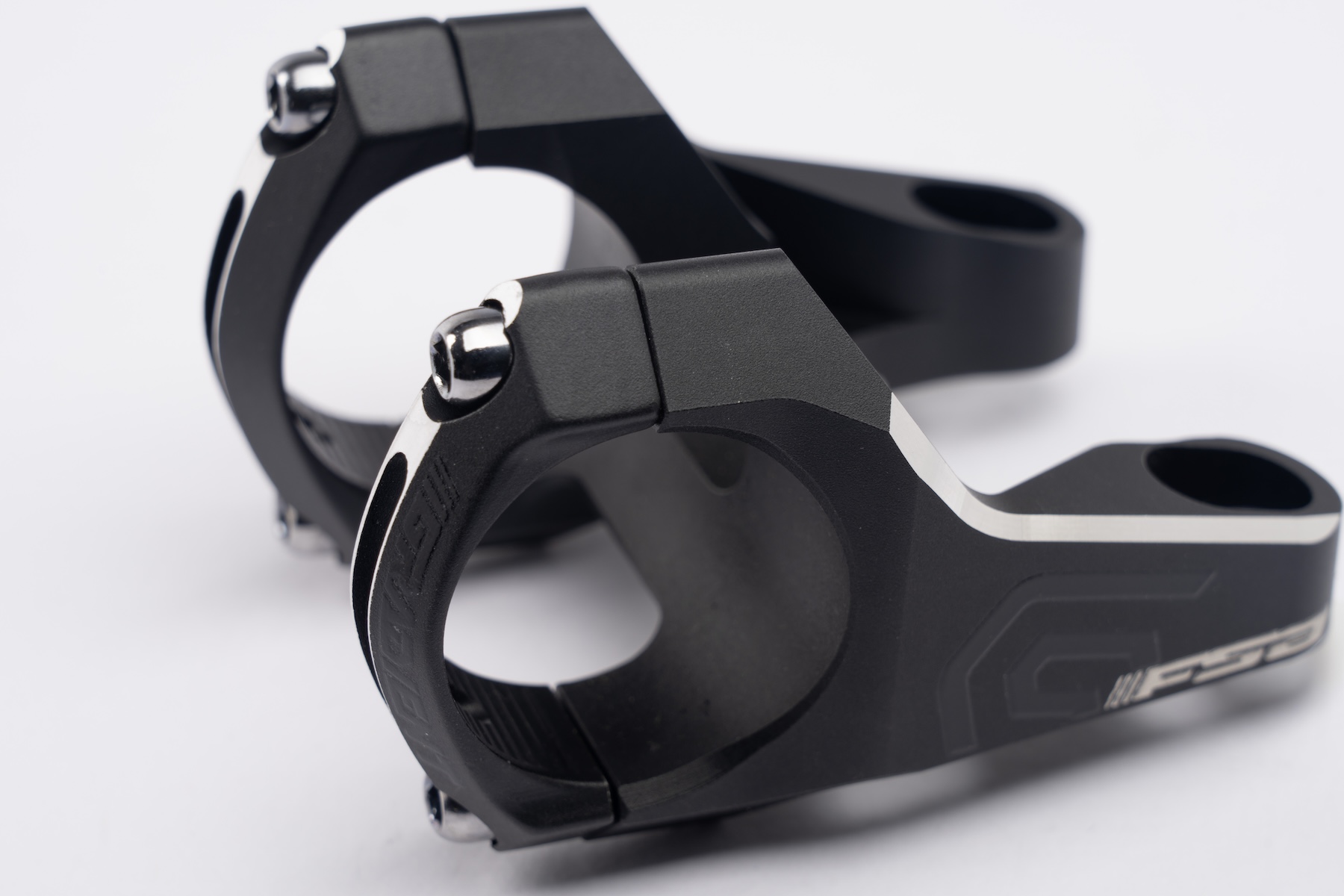
On the Trail
After cutting the bars to my preferred 785 mm width, I ended up swapping the Gradient cockpit around onto several bikes. The stem looks nice, and otherwise it does stem things well — I didn’t notice any flex, creaking, etc., which is about all I can ask for.
The Gradient bars were a touch taller than I typically like on my personal bikes with their 40 mm rise, but they ended up being just the solution I needed for a couple of bikes that rolled through with lower-than-preferred stack measurements. On the trail, they were nicely compliant, though I find many aluminum bars with a 31.8 mm diameter to be the most comfortable blend of bar diameter and material. They never felt overly flexible or vague, but they managed to do a nice job of muting some vibrations that I noticed on other handlebar setups in my test fleet.
The two-tone matte and gloss finish looks nice, and the graphics proved durable throughout testing — the bars still look great and will likely stay in the rotation.
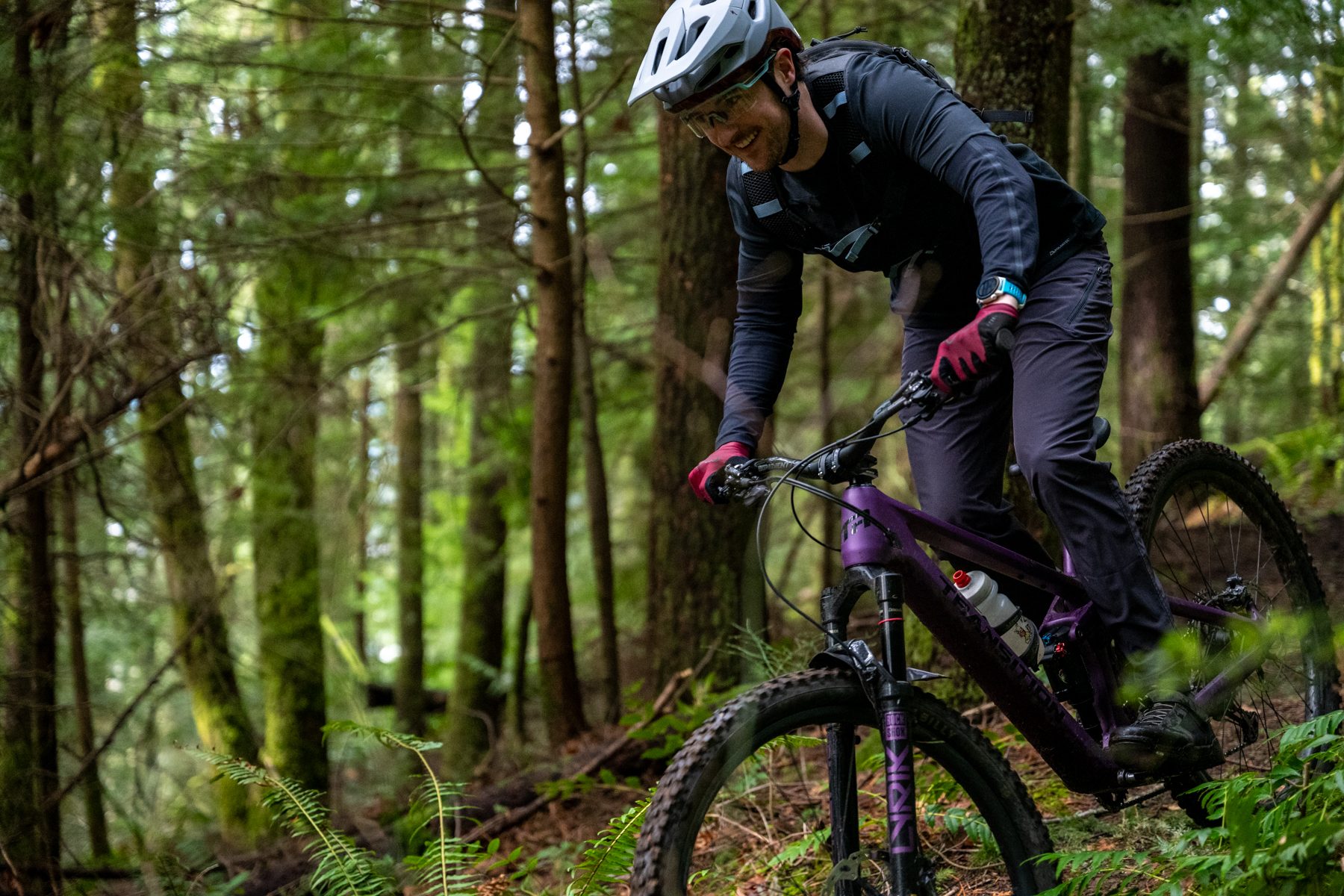
Who’s It For?
I envision the Gradient lineup having rather broad appeal for Enduro and even Trail riders looking for solid parts with an understated but sharp-looking design. The wheels are the most exciting aspect of the lineup in my view, and they are very solid performers at a reasonable price and weight. The hub design balances engagement, noise levels, and simple maintenance, while the rims deliver a ride quality that is responsive without being overly stiff — even if they’re not the most compliant out there, they’re quite comfortable.
The cranks are solid, adaptable, and come in at a reasonable weight for their intended use, though the price point is a bit higher than we’ve seen in recent years from other mainstream aluminum cranks. The BB392EVO bottom bracket standard has been around for a bit, but the fact that it requires a unique tool and bottom bracket may irk some potential buyers, especially given that parts are less likely to be available down at a local shop as compared to more mainstream brands.
Finally, the handlebars and stem do everything that handlebars and stems should — they look sharp and have generally made themselves unnoticed while riding. The bars feel fairly comfortable and compliant in their flex profile, too, though we only tried the aluminum ones in the 31.8 mm diameter.
Bottom Line
With their new Gradient lineup, FSA has cooked up a sharp-looking and seemingly durable set of components for the Enduro market. The wheels are the standout of the bunch for me for their blend of a solid (and quiet) driver mechanism, comfortable ride feel, fairly low weight, and reasonable asking price. The cranks, handlebars, and stem all perform well and look sharp, too. While their parts tend to fly under the radar compared to some other brands, there’s a good reason to give the FSA Gradient parts a look — there’s a lot to like about them.
